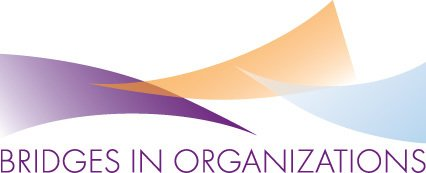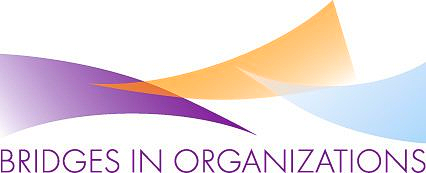ConsciousnessWorks™ starts from the premise all action is a result of the attention and kind of energy we put into performing action.
Four High- Return, Low Risk Influencers for Shifting a Culture
Culture is the acquired knowledge that people use to generate behavior and interpret experience. Often called our shared design for living, culture is also dynamic, changeable, and contagious.
Think of culture like a river of interpretations we land in and flow with- so much so that swimming in the river becomes transparent. For those immersed in it, it is little more than a background of obviousness allowing us to get on with the business of life. Have you heard the story of two fish swimming in the ocean? One fish says to the others, “How’s the water today?” The other replies, “What water?”
Let’s say you are in a culture structured with a clear hierarchy of power at the top where decisions that affect the whole organization are hampered by limiting beliefs and assumptions. Let’s also say you don’t sit in the C-suite, but you want to influence an outcome to change the way business gets done. You want to make change that is do-able and practical no matter where you sit in the organization. Here are four simple, but not easy, low-hanging fruit influencers. The four influencers are:
- Stories told about the organization.
- Ways meetings are run.
- Methods for making decisions.
- Routine and outworn work habits for getting work done.
The key to success is to focus on the one influencer that is going to give you the highest return and lowest risk of failure in your organization. What works and what is possible will become evident when you focus on your highest points of pain.
| Organizational Pain Problem | Antidote - Pain Alleviator Tools |
|---|---|
| Low morale and negative gossip | Constructive Storytelling |
| Too many unproductive meetings | Meeting Maps |
| Decisions taking too long | Quick Turnaround Action Plans |
| Lack of trust from too many broken promises | Committed Promises for the Coordination of Work |
To start with, focus on a high-return influencer and introduce one new practice at a time. Choose what you care about and what is important given the environment you are in and the relationships among and between people.
Constructive Storytelling
We are constantly influencing someone’s future thoughts (and thus perhaps, behaviors) by the stories we tell. Misinterpretations about meaning or intentions occur when a story leaves out the pertinent facts and leads the listener to negative interpretations. When the general gossip in an organization is based on assumptions, the negative emotional contagion can leave the listener feeling resentful, resigned and/or harmed.
Stories are built from facts and interpretations with an emotional context. The stronger the emotions (positive or negative), the more likely we are to remember the story after it’s told. By directing our attention to constructive stories, we see more possibilities and actually shift our mood toward greater ambition or enthusiasm.
Here's a good story- For the past 3 years, on weekends, Kit volunteers in a homeless shelter for abused women and their children. During the pandemic, the shelter became threatened by possible COVID-19 infections so Kit, along with 2 other volunteers, tapped into their network of help at work and found another facility where these families could receive medical care and still be safe. After their selfless contribution was announced, other co-workers took it upon themselves to reward the 3 volunteers with 5 home-cooked and delivered meals. Now that’s good news!
Stories told and retold over time create the reputation and public identity of an organization. That is why you want to influence the stories told by your staff and clients to focus on the “good news” stories, what is going well and what is working. The mood of the whole organization can shift by the stories people tell.
Meetings that Work
It is said that most professionals spend between 50-80% of their day in meetings. Yet, one of the biggest complaints about time-wasters in organizations has to do with unproductive meetings. Changing the ways meetings are run can have an almost immediate effect on the culture as there are so many people participating in meetings at work every day. First and fundamental to implementing meetings that work is to define and implement a structure to improve the productivity of your meetings.
Begin with determining whether or not you have a clear and stated purpose for the meeting. Is it to?
- Update/Share Information: Provide information to stakeholders.
- Collect Input: After providing information, the lead on the topic may request input/feedback from stakeholders.
- Problem Solve and Decide: Discuss possible solutions to issues/situations with stakeholders and make decisions.
- Plan: Identify goals, required actions and coordinate future action- who will do what by when?
Once you have a purpose for meeting, double check if you really need to meet and why? Ask yourself:
- Is there another way to achieve my purpose?
- Is it the right time to meet?
- Is the topic ready? Or is it premature to meet?
- Have I done the necessary prep work (informed stakeholders, etc.)?
- What are possible unintended consequences?
If you answer yes to all the questions above, then use a Meeting Map to prepare for the meeting and then a Stakeholders Map to determine who should participate.
Decision-making Methods
undamentally, decisions are about relationships. Decisions are choices that affect not just us but those within our sphere of influence. Whether we are talking about families or platoons or departments at work, ultimately, the decisions we make affect our relationships. That is why, decisions tend to be made on one of two ends of the spectrum: 1) I, as the leader take control and decide for everyone else; or 2) I, as the leader, want to include everyone’s input in order to have complete buy-in for the decision. To get the buy-in often becomes an arduous process of negotiating tit for tat reciprocitys or countering passive-aggressive resistance to participation. However, there are many tools for short-cutting the “buy-in” process. The whole umbrella of practices and tools we call Quick Turnaround Action Plans.
Quick Turnaround Action Plans often begin with a tool called the Significance Test. This is a way to survey those affected by big decisions as to how meaningful and/or consequential a decision is to affect their own plans or priorities. The aim of this tool is to gain a person’s commitment and determine the support they want to implement the potential decision. What follows then is an Action Map to hold folks accountable for their commitments. A simple chart that focuses on “who will do what by when” in public view will suffice.
Routine and Outworn Habits for Coordinating Work
When a given set of people has shared a significant number of experiences that have led them, over time, to a shared view of the world around them and their place in it- that is organizational culture! This shared view must have worked long enough to have dropped out of awareness. Culture is the complete set of basic assumptions and beliefs shared by members of an organization which operate unconsciously for the most part so that members can live in a basic take it for granted fashion. Behaviors like these we call habits.
Managers are told to delegate and coordinate the day-to-day work- not necessarily do that work themselves. Every day we hear supervisors and managers ask for results on a project, a report to be completed or a new policy to be implemented. And every day we hear bad habit responses such as “I’ll try” or “sure, later” or “as soon as I finish that other priority.”
However, none of these responses represent a committed promise. When there is no distinct ask requiring the performer to make a clear promise for some result at a future specified time, trust breaks down. It is easy to see the alleged performer as unreliable, insincere or even incompetent for making that implied promise. Once a person assesses another person as untrustworthy, the social glue of that relationship has broken down.
To develop powerful new habits around coordinating work requires clear requests and committed promises. Both clear requests and committed promises share a time factor – a by when element. Will you do project X by time Y? There may be additional elements or requirements to satisfy the request, nonetheless, the time due is always an element. A committed promise sounds like this, Yes, I will do project X by time Y.” If the performer isn’t clear or wants to make a counteroffer, a negotiation might begin. Remember, anything but a clear YES is actually a NO, whether assumed or implied. Use the tool, Designing the Future, to coordinate effective action.
Conclusion
I believe that mid-level managers who are both motivated and are also equipped with the proper tools, have it in their sphere of influence to change elements of their unit’s culture for the better even when the whole organization doesn’t shift. You don’t have to be a hero to adopt new practices. It is within each of us to create healthy, thriving environments around us by making different choices and implementing practices that change the way we live and work together.
To learn more about the many tools we offer, sign up for
Making Change: Grow your Power to Lead.



